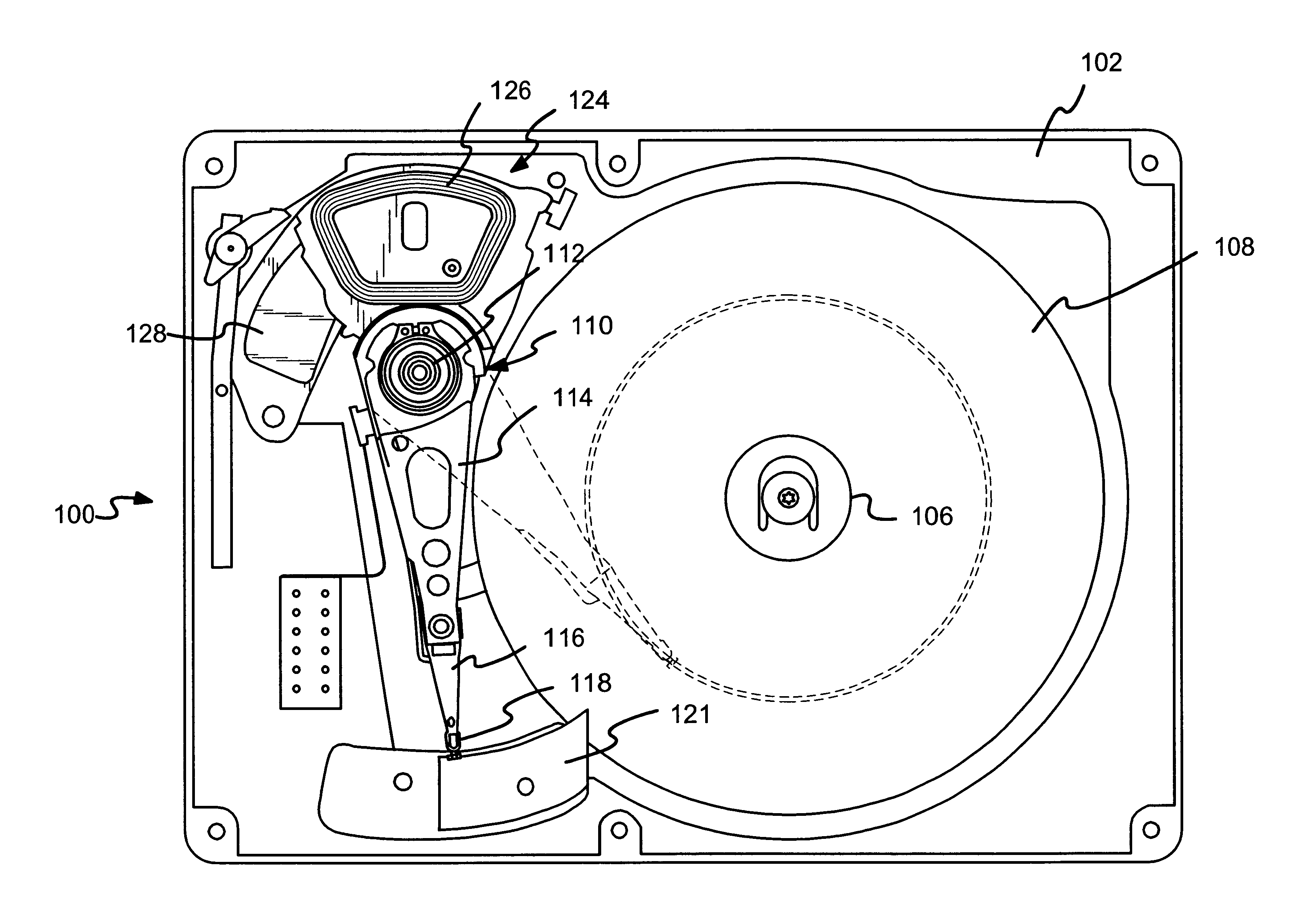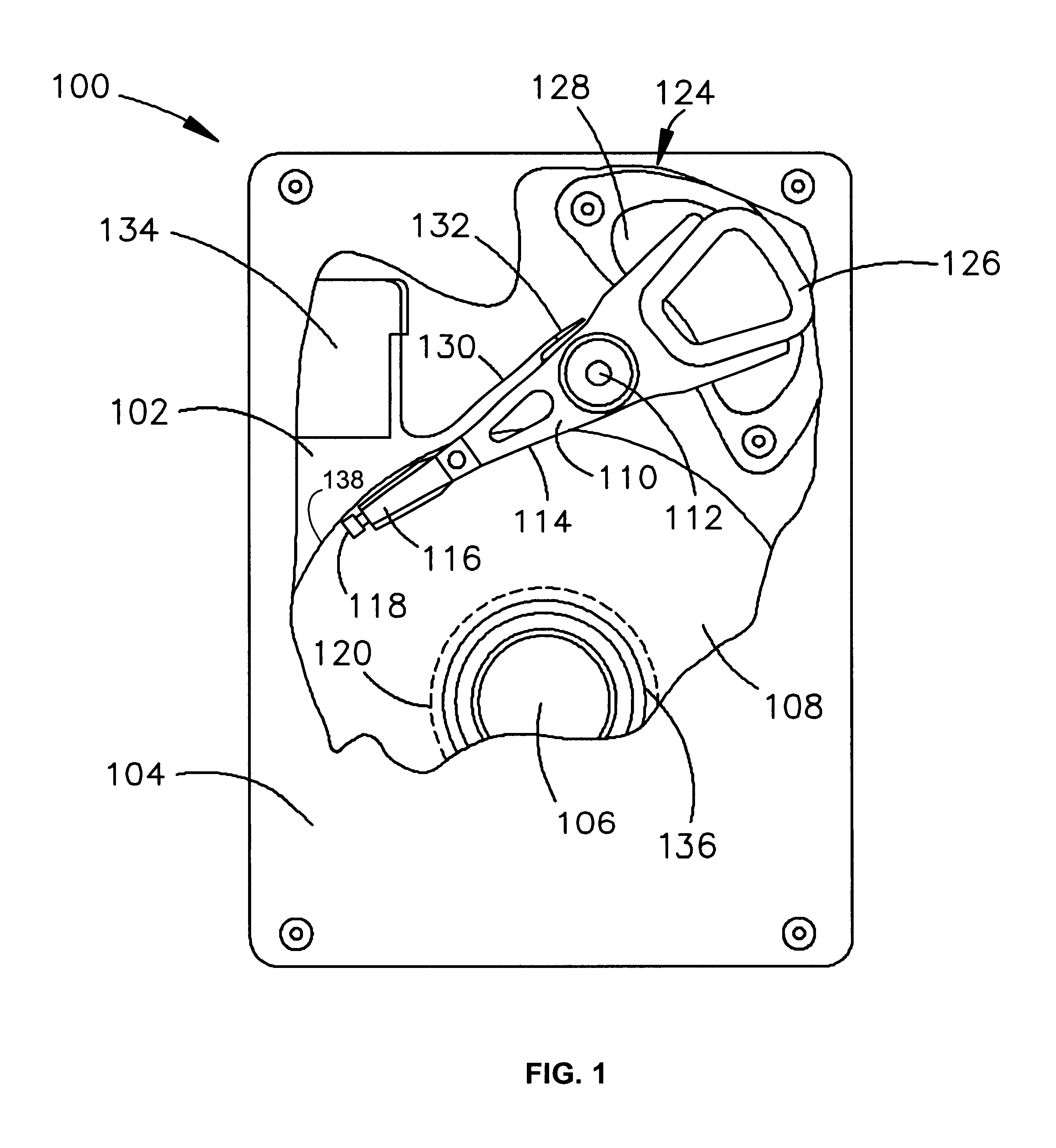Method and device for retracting an actuator
a technology of actuator and actuator arm, which is applied in the direction of data recording, instruments, and recording head arrangements, etc., can solve the problems of stiction affecting the read/write head, and the actuator arm, and the ramp presents additional resistance to the movement of the actuator arm, so as to achieve constant retraction speed, increase or decrease the effect of the retraction speed and the constant retraction speed
- Summary
- Abstract
- Description
- Claims
- Application Information
AI Technical Summary
Benefits of technology
Problems solved by technology
Method used
Image
Examples
first embodiment
In accordance with a first embodiment shown in FIG. 1, the disc 108 may include one or more landing zones 120 for parking the read / write head 118 while the drive 100 is de-energized. As such, the head 118 is prevented from inadvertently contacting the surface of the disc 108 while the disc 108 is stationary. The use of a landing zone 120 to disengage a head 118 from data regions 304 on the surface of the disc 108 is commonly found in disc drives 100 administering a contact start / stop technique. With respect to the contact start / stop technique, the servo control system 150 controls the actuator 114 such that the slider contacts the landing zone 120 during start and stop operations when there is insufficient rotational speed to maintain the air bearing between the surface of the disc 108 and the slider. The landing zone 120 may be a dedicated radial region on the disc 108 that is specially textured to minimize the effect of stiction, which is static friction between a very smooth disc...
second embodiment
In accordance with a second embodiment shown in FIG. 2, the disc 108 may include a load / unload ramp 121 for parking the read / write heads 118 off the surface of the disc 108 while drive 100 is de-energized. A load / unload ramp 121 prevents the read / write head 118 from inadvertently contacting the surface of the disc 108 while the disc 108 is rotating at a speed insufficient for maintaining the air bearing between the surface of the disc 108 and the slider. In a disc drive 100 utilizing a load / unload ramp 121, the read / write head 118 is mechanically unloaded from the disc 108 by the servo control system 150 at power-down. The head 118 is then loaded back to the disc 108 when the disc 108 has reached a rotational speed sufficient to generate the air bearing.
Referring now to FIG. 4, shown therein is a functional block diagram of the disc drive 100 shown in FIGS. 1 and 2 generally showing the main functional components which are resident on the disc drive printed circuit board and used to...
PUM
| Property | Measurement | Unit |
|---|---|---|
| current | aaaaa | aaaaa |
| open-circuit voltage | aaaaa | aaaaa |
| velocity | aaaaa | aaaaa |
Abstract
Description
Claims
Application Information
 Login to View More
Login to View More - R&D
- Intellectual Property
- Life Sciences
- Materials
- Tech Scout
- Unparalleled Data Quality
- Higher Quality Content
- 60% Fewer Hallucinations
Browse by: Latest US Patents, China's latest patents, Technical Efficacy Thesaurus, Application Domain, Technology Topic, Popular Technical Reports.
© 2025 PatSnap. All rights reserved.Legal|Privacy policy|Modern Slavery Act Transparency Statement|Sitemap|About US| Contact US: help@patsnap.com



